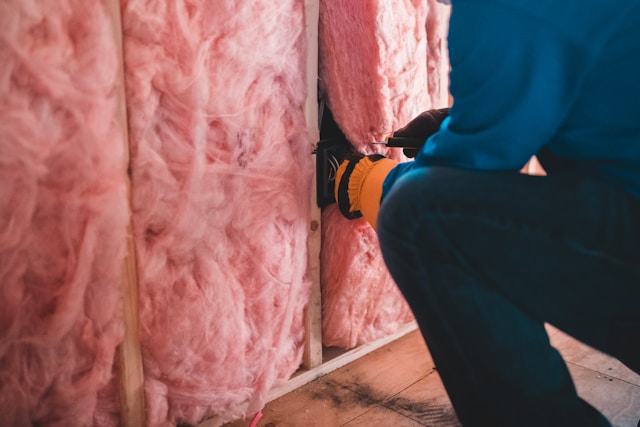Corrosion is more than just an eyesore; it’s a silent destroyer lurking in industrial environments, threatening the integrity of structures and systems. In industries where metal and environmental factors mix, such as oil, gas, and heavy machinery, corrosion can be particularly destructive. The role of protective coatings in insulation systems becomes crucial, not just to maintain aesthetics, but to extend the life of equipment and ensure safety. This post explores how these coatings act as guardians against corrosion, emphasizing their importance in preserving infrastructure and improving operational efficiency.
Understanding Corrosion and Its Impact
Corrosion occurs when metals deteriorate due to chemical reactions with their environment. It’s a natural, albeit destructive, process that can lead to severe structural damage if not mitigated. The financial burden and safety risks associated with corrosion highlight the need for preventive measures.
In industries like oil and gas, corrosion can compromise pipelines and tanks, leading to leaks, spills, and environmental damage. Similarly, in heavy haul trucking in Wyoming, corrosion can severely impact the reliability of transport equipment, causing unforeseen delays and maintenance costs. Understanding the causes and consequences of corrosion is the first step in developing effective strategies to combat it.
The Science Behind Protective Coatings
Protective coatings are specialized substances applied to surfaces to prevent corrosion. They act as barriers, isolating the metal from environmental factors like moisture and oxygen that cause corrosion. These coatings are engineered to be robust, adhering tightly to surfaces even under harsh conditions.
The technology behind these coatings involves complex chemistry. Epoxies, polyurethanes, and zinc-rich primers are common types, each offering unique protective properties. The choice of coating depends on the specific environmental challenges and the type of metal used. By understanding these scientific principles, industries can select the most effective coatings to protect their assets.
Types of Protective Coatings
The variety of protective coatings available caters to different industrial needs. Epoxy coatings are popular for their strong adhesion and resistance to chemicals. Polyurethane coatings offer flexibility and UV resistance, making them suitable for outdoor applications. Zinc coatings, known as galvanization, provide sacrificial protection, where zinc corrodes instead of the underlying metal.
Each type of coating has its own advantages and application methods. For example, spray application ensures even coverage and quick drying, while brush application allows for precise control in complex areas. Choosing the right type of coating involves assessing the specific protection required and the environmental conditions the asset will face.
Importance of Insulation Systems in Corrosion Prevention
Insulation systems play a crucial role in regulating temperatures and preventing energy loss, but they also interact with protective coatings to combat corrosion. Insulation helps maintain a stable temperature, reducing the risk of condensation that can lead to corrosion under insulation (CUI), a major concern in many industries.
By combining effective insulation with high-quality coatings, industries can create a comprehensive barrier against corrosive elements. This synergy not only protects the metal but also enhances the efficiency of thermal regulation systems, reducing energy costs and extending the lifespan of equipment.
Selecting the Right Coating for Your Needs
Choosing the right protective coating requires careful consideration of several factors. The type of metal, environmental conditions, and specific industry regulations all influence the decision. For instance, offshore oil rigs require coatings that can withstand saltwater corrosion and harsh weather conditions.
Consulting with experts in the field can provide valuable insights into the best coatings for specific applications. They can help assess the unique challenges faced by different industries and recommend solutions tailored to meet those needs. This strategic approach ensures optimal protection and longevity for valuable assets.
Application Techniques for Optimal Results
Application techniques are as important as the coatings themselves. Proper surface preparation, such as cleaning and priming, is essential for the coating to adhere effectively. Techniques like abrasive blasting can remove contaminants and create a rough surface for better adhesion.
Applying the coating requires precision and expertise. Techniques such as airless spraying and electrostatic application can achieve even coverage and consistent thickness. Post-application inspections ensure that the coating is free from defects, providing maximum protection against corrosion.
Maintenance and Inspection of Coated Surfaces
Regular maintenance and inspection of coated surfaces are critical to ensure long-term effectiveness. Coatings can degrade over time due to environmental exposure, mechanical damage, or chemical interactions. Routine inspections can identify early signs of wear or damage, allowing for timely repairs.
Implementing a maintenance schedule that includes cleaning, touch-ups, and performance evaluations can extend the life of protective coatings. Investing in ongoing maintenance not only preserves the integrity of the coatings but also prevents costly downtimes and repairs.
Innovations in Coating Technology
Advancements in coating technology continue to enhance corrosion prevention strategies. Nanotechnology is being explored to develop coatings with superior resistance and self-healing properties. These innovations promise to reduce maintenance costs and improve the durability of protective layers.
New formulations are also being developed to reduce environmental impact. Waterborne coatings and those with low volatile organic compounds (VOCs) provide effective protection while adhering to environmental regulations. Staying informed about these innovations helps industries stay ahead in the fight against corrosion.
Case Studies of Successful Corrosion Prevention
Real-world examples highlight the effectiveness of protective coatings in preventing corrosion. In the marine industry, ships treated with advanced coatings show reduced hull corrosion, resulting in lower maintenance costs and improved fuel efficiency. Similarly, industrial plants using cutting-edge coatings have reported longer equipment lifespans and fewer operational disruptions.
These case studies provide valuable lessons and inspiration for other industries facing corrosion challenges. By learning from successful implementations, companies can adopt best practices and achieve similar results in their own operations.
Conclusion
Protective coatings are indispensable in the fight against corrosion, offering reliable defense for valuable assets. By understanding the role of these coatings and implementing strategic prevention measures, industries can safeguard their infrastructure and enhance operational efficiency. Regular maintenance, combined with the latest coating technologies, ensures that systems remain resilient in the face of corrosive threats. For businesses looking to maintain their competitive edge, investing in protective coatings is a smart and necessary choice.


